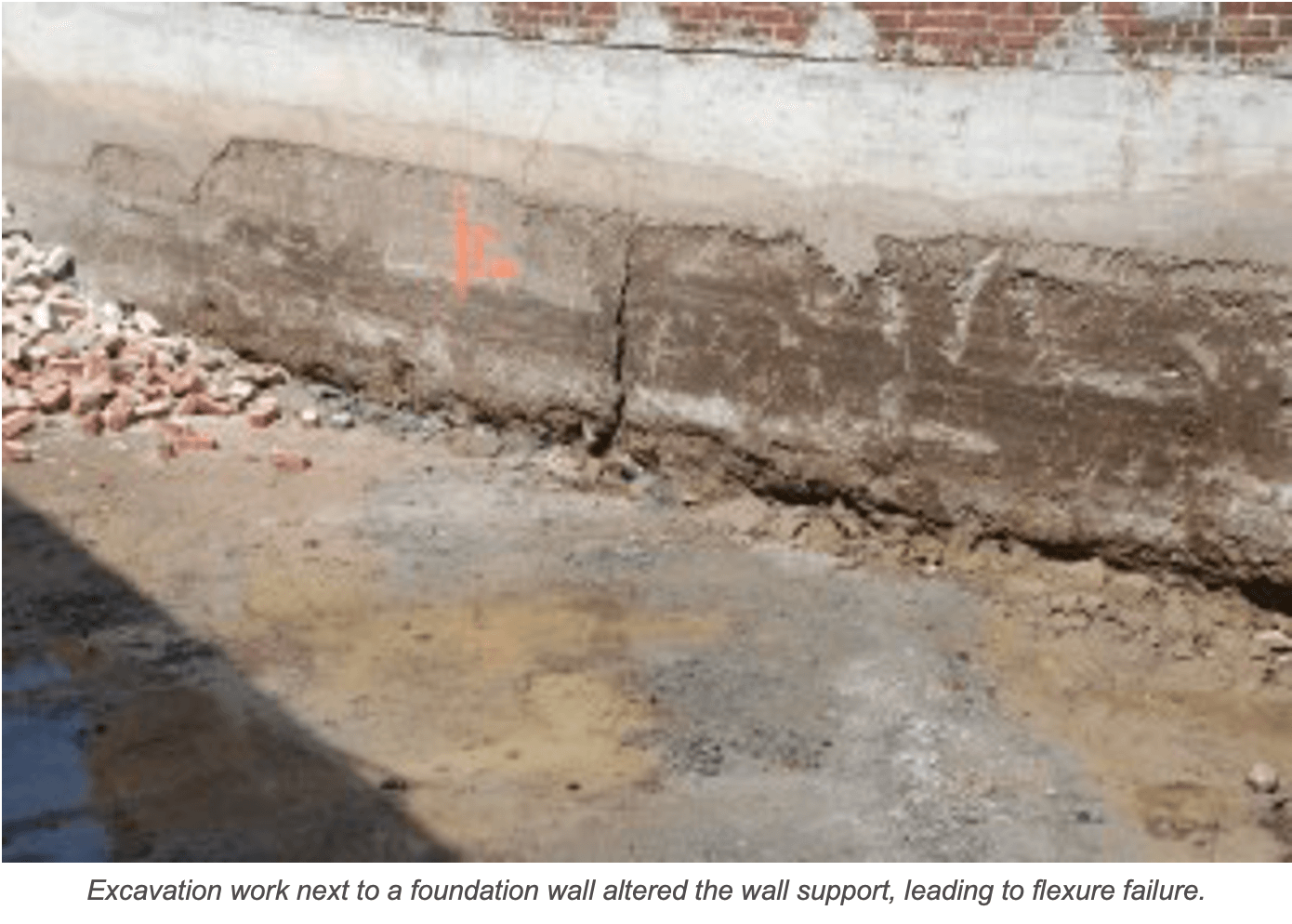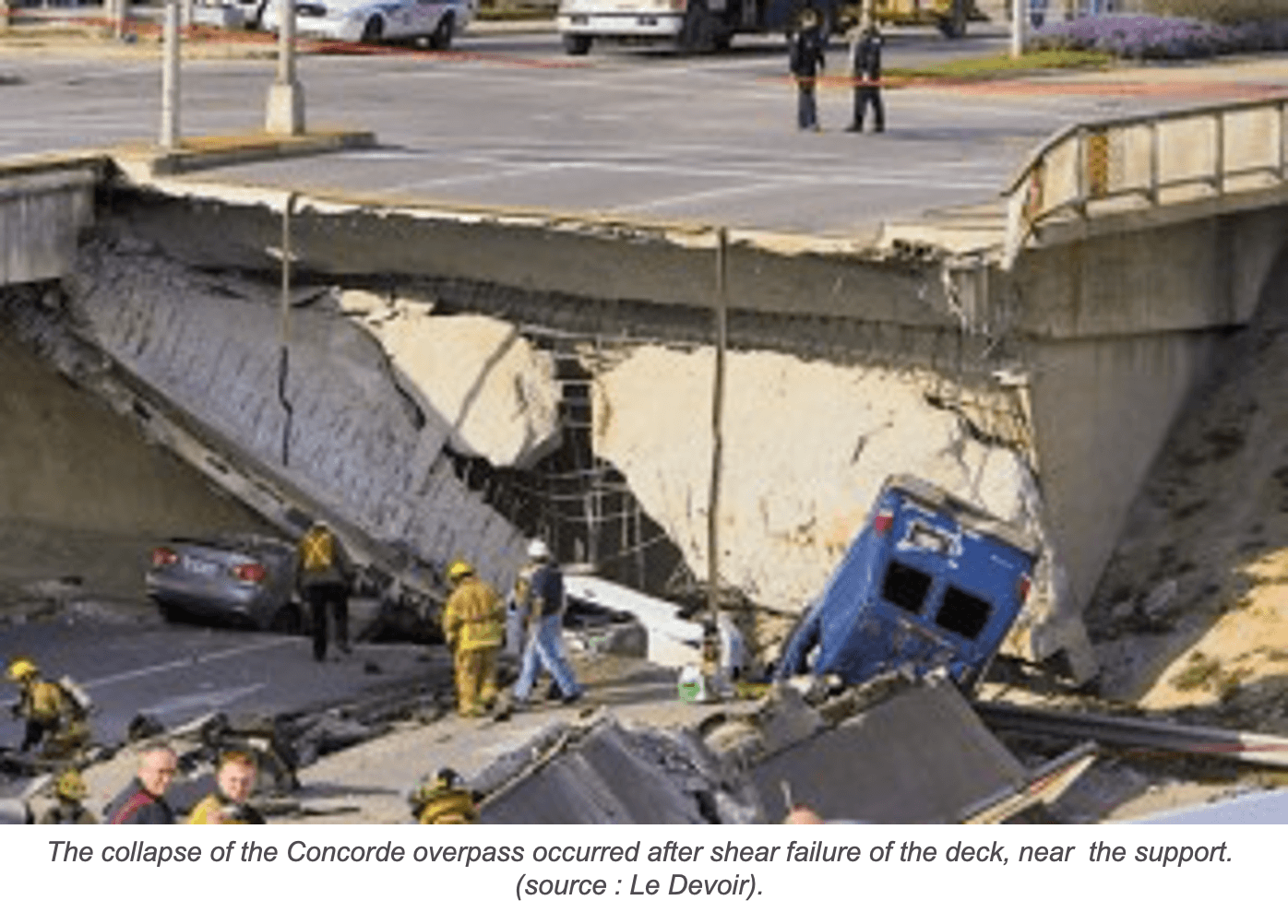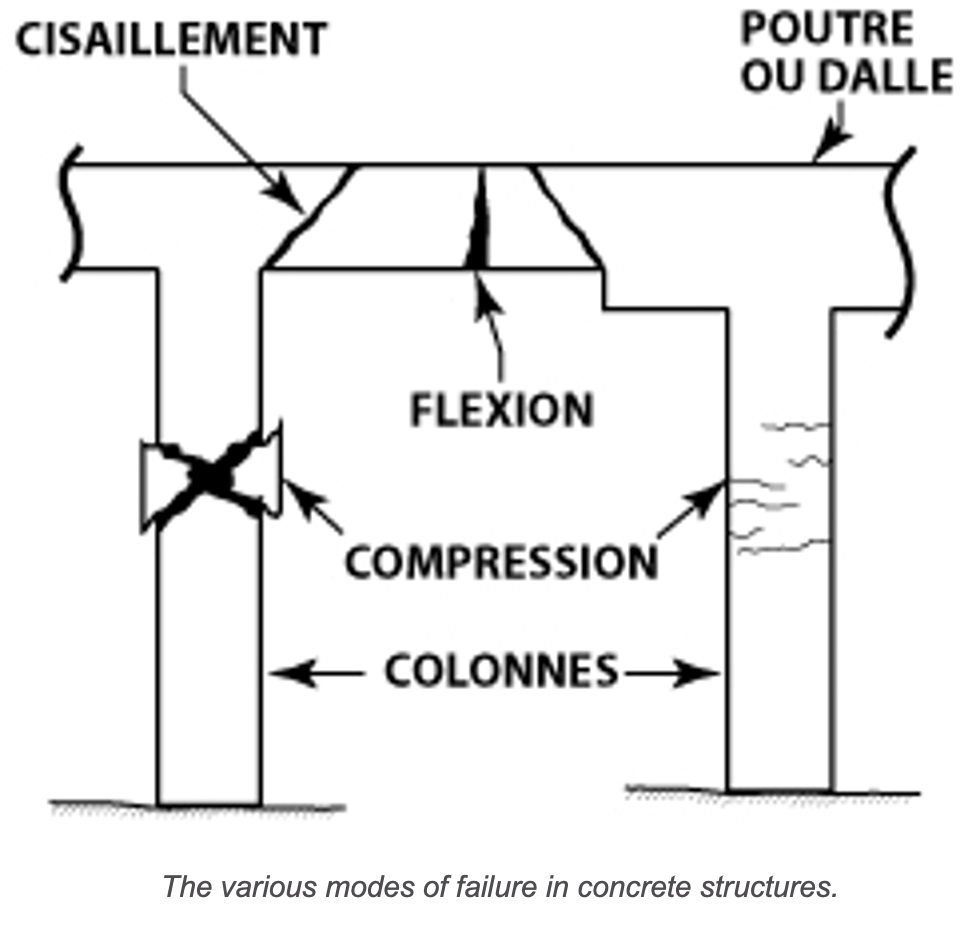Concrete is a material known for its great strength. Regardless, there are a few weaknesses, which must be taken in consideration in the design of concrete structural elements.
 Basically, concrete is made of three main ingredients: Portland cement, water, and aggregates (sand and stone). Portland cement reacts chemically in contact with water to form a rigid matrix that bonds the aggregates together. The final result is a material with a relatively consistent strength in all directions. Concrete can withstand large compressive loads. However, when subject to tensile forces, its resistance is much less and failure is usually sudden.
Basically, concrete is made of three main ingredients: Portland cement, water, and aggregates (sand and stone). Portland cement reacts chemically in contact with water to form a rigid matrix that bonds the aggregates together. The final result is a material with a relatively consistent strength in all directions. Concrete can withstand large compressive loads. However, when subject to tensile forces, its resistance is much less and failure is usually sudden.
In order to improve tensile strength and ductility (capacity to stretch and deform prior to failure) in concrete elements, reinforcement is used, usually in the form of steel, fiberglass or carbon fibre bars. Commonly referred to as rebar, reinforcement has a tensile strength far superior to concrete. The use of rebar allows the design of smaller and lighter elements, but also helps control cracking.
We must understand that whether it is reinforced or not, cracks will occur naturally in concrete elements once in service. Sometimes invisible to the naked eye and sometimes very large, cracks in concrete can be quite alarming to the users of the structure.
 In order to assess the importance of cracks, structural engineers must analyze the structural behaviour of the concrete elements. These can be stressed mainly in 4 ways: compression, tension, flexure and shear. This bulletin will discuss these types of stress, as well as some basic principles for troubleshooting. It should be noted that there are other, less frequent types of stresses, such as torsion and seismic deformation of joints. These will not be covered in the present article.
In order to assess the importance of cracks, structural engineers must analyze the structural behaviour of the concrete elements. These can be stressed mainly in 4 ways: compression, tension, flexure and shear. This bulletin will discuss these types of stress, as well as some basic principles for troubleshooting. It should be noted that there are other, less frequent types of stresses, such as torsion and seismic deformation of joints. These will not be covered in the present article.
Concrete is subject to compressive forces when a pushing force is applied on two opposite faces of the object. This force can be applied in the longitudinal axis of an element, such as a column, or in the transverse axis, as is the case for a foundation footing. Compressive strength is where concrete shines. But when the forces exceed the capacity of a compressed element, the concrete will break or burst. The use of rebar helps contain the concrete. The issue then becomes visible before the ultimate failure, allowing an intervention to take place before a catastrophe occurs. Compressive strength can be improved by using a higher-yield concrete mix, or by raising the contact area to spread the load. Designing larger elements, or building a greater number of elements are the most common means to accomplish this.
Tensile strength is the Achilles’ heel of concrete. In fact, its tensile strength represents merely 10% of its compressive strength. The use of rebar is necessary for concrete to resist almost any type of tension. Tension forces in concrete are usually found in bent elements.
 In fact, flexure is nothing more than a combination of compression and tension in one element. A beam constitutes a prime example. The load is applied in the transversal axis of an element, which is supported at each end. In the middle of the span, the upper part of the beam is compressed, while the lower part is subject to tension forces. The same principles apply to structural slabs and foundation walls. As we have seen previously, concrete is weaker when subject to tensile forces, and because of this, the first symptoms of a weakness are often visible in the lower part of the beam, where transverse cracks will appear. Since it is impossible to add rebar inside the concrete mass a posteriori, the use of mechanically anchored external reinforcements (steel plates, for example) is recommended in the strained part of the element. In the last few years, technological advan
In fact, flexure is nothing more than a combination of compression and tension in one element. A beam constitutes a prime example. The load is applied in the transversal axis of an element, which is supported at each end. In the middle of the span, the upper part of the beam is compressed, while the lower part is subject to tension forces. The same principles apply to structural slabs and foundation walls. As we have seen previously, concrete is weaker when subject to tensile forces, and because of this, the first symptoms of a weakness are often visible in the lower part of the beam, where transverse cracks will appear. Since it is impossible to add rebar inside the concrete mass a posteriori, the use of mechanically anchored external reinforcements (steel plates, for example) is recommended in the strained part of the element. In the last few years, technological advan cements in composite materials have allowed the use of carbon fibre plates as a mean of improving tensile strength in concrete structures. This practice provides good results, but can be price prohibitive in some cases. They are mainly used in cases where corrosion resistance is important, such as bridges and parking lots, which are exposed to road salts.
cements in composite materials have allowed the use of carbon fibre plates as a mean of improving tensile strength in concrete structures. This practice provides good results, but can be price prohibitive in some cases. They are mainly used in cases where corrosion resistance is important, such as bridges and parking lots, which are exposed to road salts.
Finally, the least known type of stress is most certainly shear. Shear appears as cracks near the supports of a beam. A vertical crack near the junction of two perpendicular foundation walls could also be the first sign of a shear problem. Shear failures can often be quite sudden and unforgiving. This is why shear resistance constitutes a critical point in structural design. Think of the Concorde overpass that collapsed a short time after a structural inspection. Moreover, reinforcement methods are scarce and can be difficult to execute.
Conclusion
Concrete is a material for which properties and quality can vary greatly. It is important to take the time to identify the exact cause of a crack to determine if corrective work is necessary or not. A careful analysis performed by a structural engineer will bring answers to most questions and help to pin point the proper corrective work that needs to be performed, if any.
For more information or to talk about a claim with one of our experts, contact our Structural and Civil Engineering Team at 877 686-0240 or info@cep-experts.ca.
